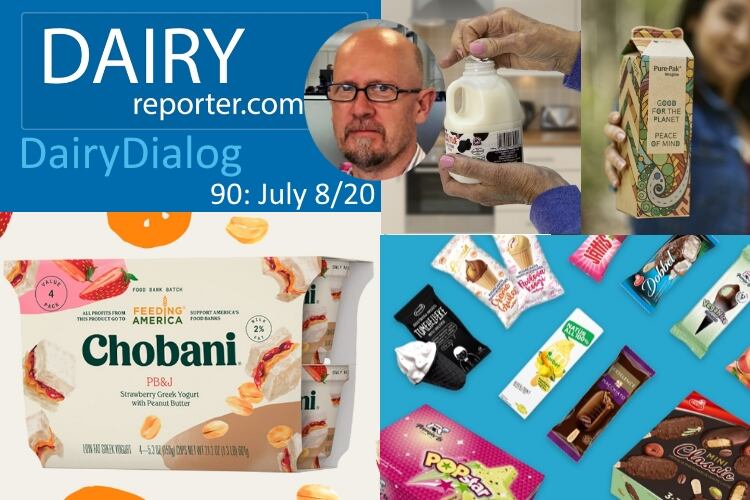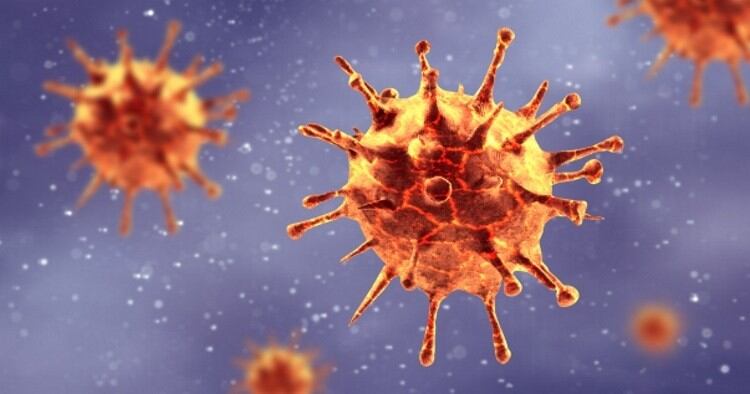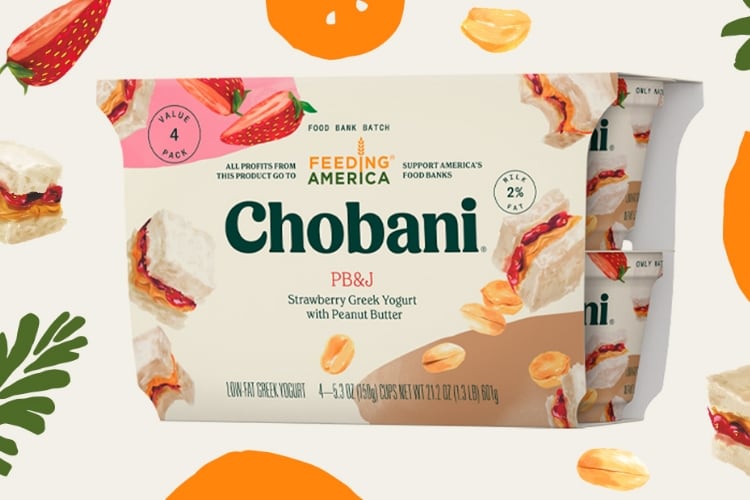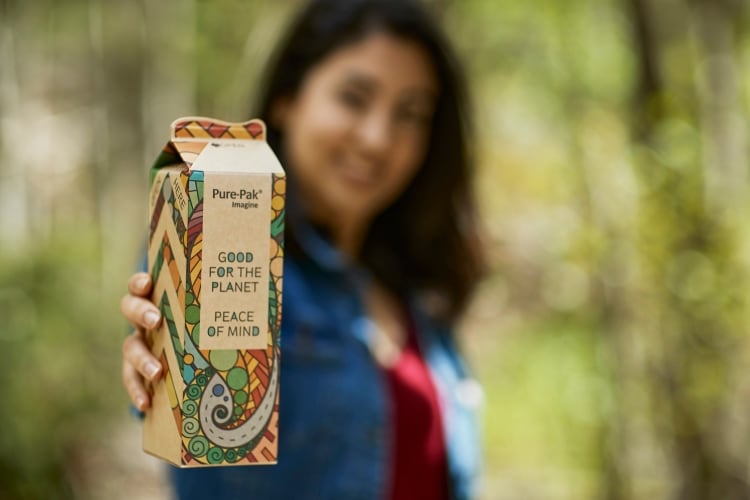We also have our weekly look at the global dairy markets with Charlie Hyland from StoneX.
One small change for US dairy, one big benefit for the environment?
In the UK, 95% of milk packaging is sealed using an induction seal under the closure. The addition of this feature has enabled the amount of plastic used in the bottle to be reduced by 25%. At best, only 10% of US milk is sealed in this way.
Why hasn’t this simple, yet effective way of reducing plastic been replicated in the US?
John Brown, vice president of marketing at Selig, a global provider of induction heat seals, says while uptake has been slow in the US, there are benefits to adopting the packaging solution.
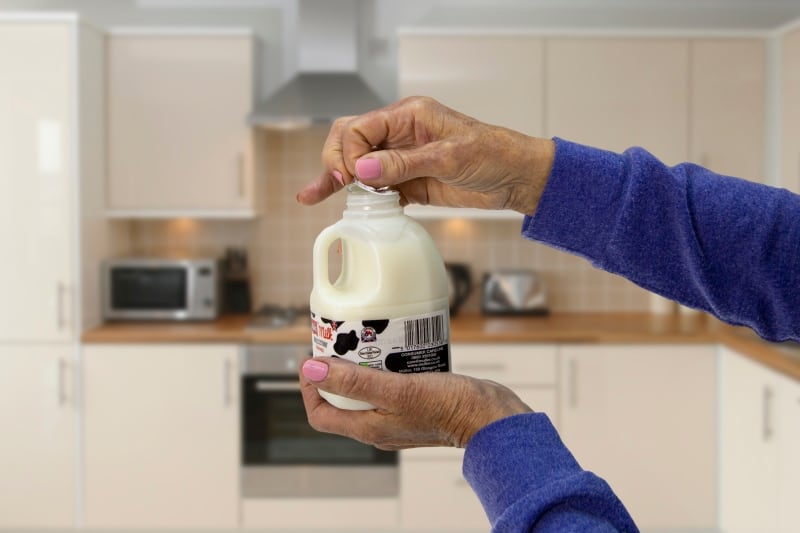
According to UK Government statistics, the UK is the eleventh-largest milk producer in the world and UK dairies traditionally process 500-550m liters per month. However the US is ranked second in the world for milk production, with the total amounting to over 98.8m metric tons (98.8bn liters) in 2018 according to Statista.
Despite the size difference between the two countries, milk in both countries still needs to be produced and transported to consumers in a way that is not only safe and secure but cost-effective as well.
By the 1990s, the deregulation of the UK’s milk industry and the decision by supermarkets to sell milk (which was previously home delivered), led to dairy producers switching to predominantly plastic packaging.
A similar pattern has been seen in the US, with one-gallon plastic milk jugs becoming widely used from the 1970s onwards. Although glass bottles have been largely replaced by plastic across the UK and the US, the convenience and cost-savings of plastic have been brought into question recently by the global plastic-waste debate.
To help reduce the amount of plastic used in dairy packaging, Selig began working with UK dairy producers in the 1990s. By adding an induction heat seal, the amount of plastic used in the packaging was reduced by up to 24% in the container and over 50% in the closure, Brown said.
“Also, due to the strong, hermetic seal that induction heat sealing creates, UK providers have been able to get rid of the tamper evidence strip on the cap as well. With roughly 2.6bn caps per year being produced for dairy packaging in the UK alone, that is a significant amount of plastic reduction, all thanks to one small induction seal,” Brown said.
Despite the fact that all non-dairy food and beverage producers in the US have accepted and embraced the advantages of induction sealing, such as leak prevention, safety, and freshness protection, there has been slow adoption in the dairy sector, he added.
This is in part due to the initial set-up cost for producers to change over to induction heat sealing technology and the fact that US dairy producers are busy competing on price, with little thought to the packaging the product is sold in.
“As well as the product integrity and plastic reduction benefits that induction heat sealing can bring to dairy packaging, US consumers are increasingly preferring it as their sealing method of choice,” Brown said.
“Selig held focus-group discussions with US consumers and asked them about their opinions on various methods of closures on their dairy containers. Interestingly, Selig’s Lift ‘n’ Peel induction heat seal came out on top in terms of both ease of opening and safety when compared with standard dairy packaging.”
More and more consumers and companies alike are seeking to do their part to make changes to avert what the Ellen MacArthur Foundation predicts is the potential disaster of there being more plastics than fish in the ocean by 2050.
“One of the ways of doing this is through ‘lightweighting’ of packaging. The UK has embraced the potential of this in the dairy industry – is it time for the US dairy industry to do the same?” Brown concluded.
Selig has produced a lightweighting white paper that can be downloaded here.
Chobani donating all profits from new PB&J yogurt to Feeding America
US Greek yogurt maker Chobani announced today it is donating all profits from a new limited edition charity flavor to Feeding America, a nationwide network of food banks that provides food to people in need.
Sold at retailers nationwide from July through September, Chobani Greek Yogurt PB&J (peanut butter and jelly) builds on the company’s support of local food banks.
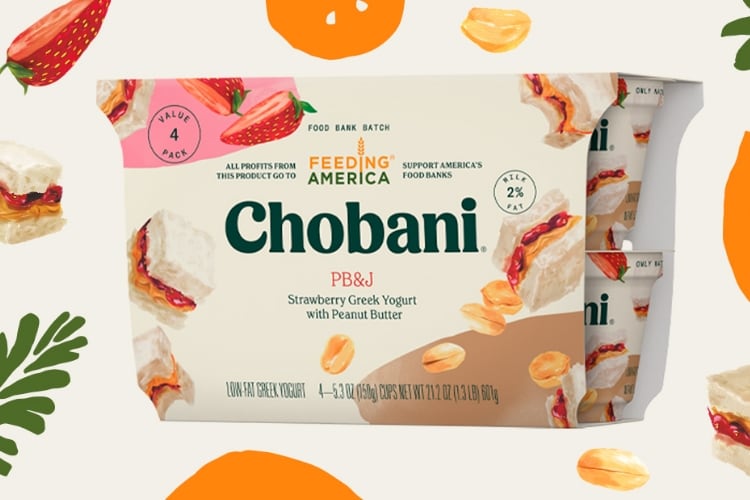
Since the COVID-19 crisis started, Chobani has donated and delivered nearly 6.5m products to US food banks, hospital frontline workers, homeless shelters and others.
“Since Chobani’s earliest days, we’ve had a close relationship with food banks. They are beacons of hope and humanity and they need our help more than ever given their communities need them more than ever,” said Peter McGuinness, president of Chobani.
“Our new Food Bank Batch is another way we can work together to support local food banks and our friends at Feeding America.”
Feeding America has estimated that an additional 17.1m Americans could face hunger this year due to the pandemic. Child hunger could reach an all-time high in 2020, increasing from 11.2m to 18m, the non-profit organization estimated.
“Food banks are on the ground addressing the increased need for food assistance in their communities. We are grateful for Chobani’s commitment to fighting hunger during this unprecedented time. Their generous support helps to provide more meals to children and families in need,” said Casey Marsh, chief development officer at Feeding America.
Food Bank Batch is the latest addition to the company’s Chobani Pantry initiative, which was designed to support local food banks. Further actions included the deployment of rapid response vehicles filled with food and drinks to hospital systems and food banks in more rural areas in the US, the conversion of Chobani’s New York City café into a temporary food pantry, and participation in New York State’s $25m Nourish New York program, which reroutes surplus agriculture products to the populations that need them most in the state. Chobani is also participating in a similar dairy purchasing program in Idaho and Utah.
Elopak launches Pure-Pak Imagine
Elopak, a global supplier of carton packaging and filling equipment for liquid food, has launched the Pure-Pak Imagine, which the company said is its most environmentally-friendly carton to date.
The new carton is a modern version of the company’s original Pure-Pak carton, designed with an easy open feature.
“Increasingly, we see that our Pure-Pak carton system is the natural solution to the global need to reduce the usage of plastic bottles,” Elopak’s chief marketing officer Patrick Verhelst said.
“With the launch of Pure-Pak Imagine, Elopak is supporting the critical causes that represent the issues of our times – but the call to action is timeless.”
Carbon neutral since 2016, Elopak uses 100% renewable electricity and has reduced emissions by 70% over the past decade. With cartons manufactured from responsibly managed forests and FSC (FSC C081801) certified material, Elopak offers customers 100% renewable cartons that use wood-based renewable plastics, rather than relying on petroleum-based plastics.
“We wish to play our part in the global shift towards a low carbon circular economy and have therefore created the most environmentally friendly carton possible,” Verhelst added.
“The Pure-Pak Imagine carton has no plastic screw cap and is 100% forest based made with natural brown board. The carton is fully renewable and carbon neutral, creating the perfect low carbon, circular economy approach.”
The company said the design of the Pure-Pak Imagine carton will create recognition on shelves and is currently available for the fresh dairy category.
“With Pure-Pak Imagine we aim to help consumers make conscious environmental choices. The carton’s easy opening gives the environmentally-minded consumer a more sustainable pack, with less plastic and more natural renewable materials,” Verhelst said.
You can watch a video of the product below or on Elopak's Pure-Pak Imagine page.

